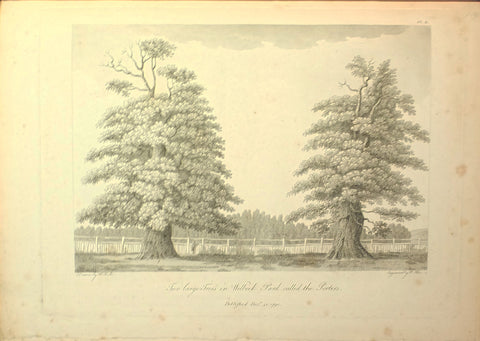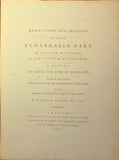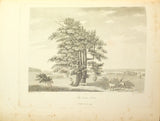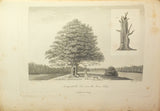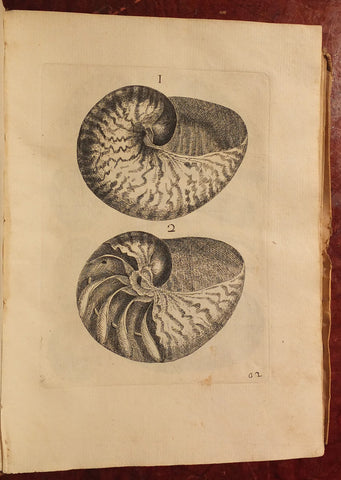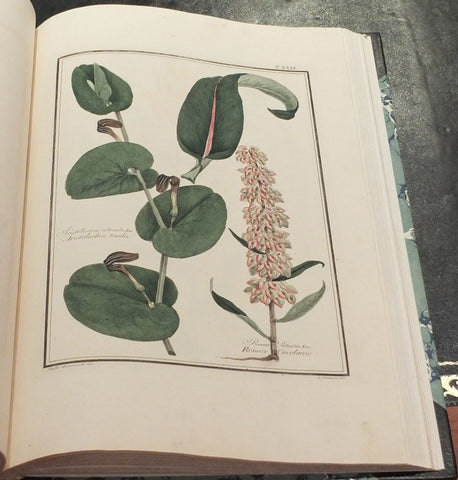Major Hayman Rooke (1723-1806), Descriptions and Sketches of some Remarkable Oaks, in the Park at Welbeck, to which are added, observations on the age and durability of that tree. With remarks on the Annual Growth of the Acorn
Major Hayman Rooke (1723-1806)
Descriptions and Sketches of some Remarkable Oaks, in the Park at Welbeck, to which are added, observations on the age and durability of that tree. With remarks on the Annual Growth of the Acorn
London: J. Nichols, 1790.
4to., (11 2/8 x 9 inches). 10 engraved plates by W. Ellis after Rooke (some spotting throughout)Original marbled paper boards (rebacked at an early date with cream paper, corners a bit worn).
Provenance: with the library label of Scottowe Hall Library one the front paste-down.
First edition, and including 9 portraits of some elegant and distinguished oak trees on the Duke of Portland's Nottingham estate: "the Duke's Walking-stick, the Porters, the Seven Sisters, the Green-Dale Oak, the Oak & Ash, the Parliament Oak, and the famous Ancient Oak in Birchland Wood, now called the Major Oak after Rooke, and purported to have sheltered Robin Hood and his merry men: "There is, about five miles from Welbeck, on Sherwood forest, and in the Duke of Portland's manor, a beautiful wood, or rather grove, consisting of above ten thousand old oaks, with birches intermixed, from whence it is called Birchland; the whole occupying a space of about eighteen hundred acres. On the north side of the great riding is a most curious antient oak, which, before the depredations made by time on its venerable trunk, might almost have vied with the celebrated Cowthorpe oak, for size. It measures, near the ground, 34 feet 4 inches in circumference; at one yard, 27 feet 4 inches; at two yards, 31 feet 9 inches. The trunk, which is wonderfully distorted, plainly appears to have been much larger; and the parts from whence large pieces have fallen off are distinguishable; the inside is decayed and hollowed out by age, which, with the assistance of the axe, might be made wide enough to admit a carriage through it. I think no one can behold this majestic ruin without pronouncing it to be of very remote antiquity; and might venture to say, that it cannot be much less than a thousand years old" (page 13-14).
We Also Recommend

